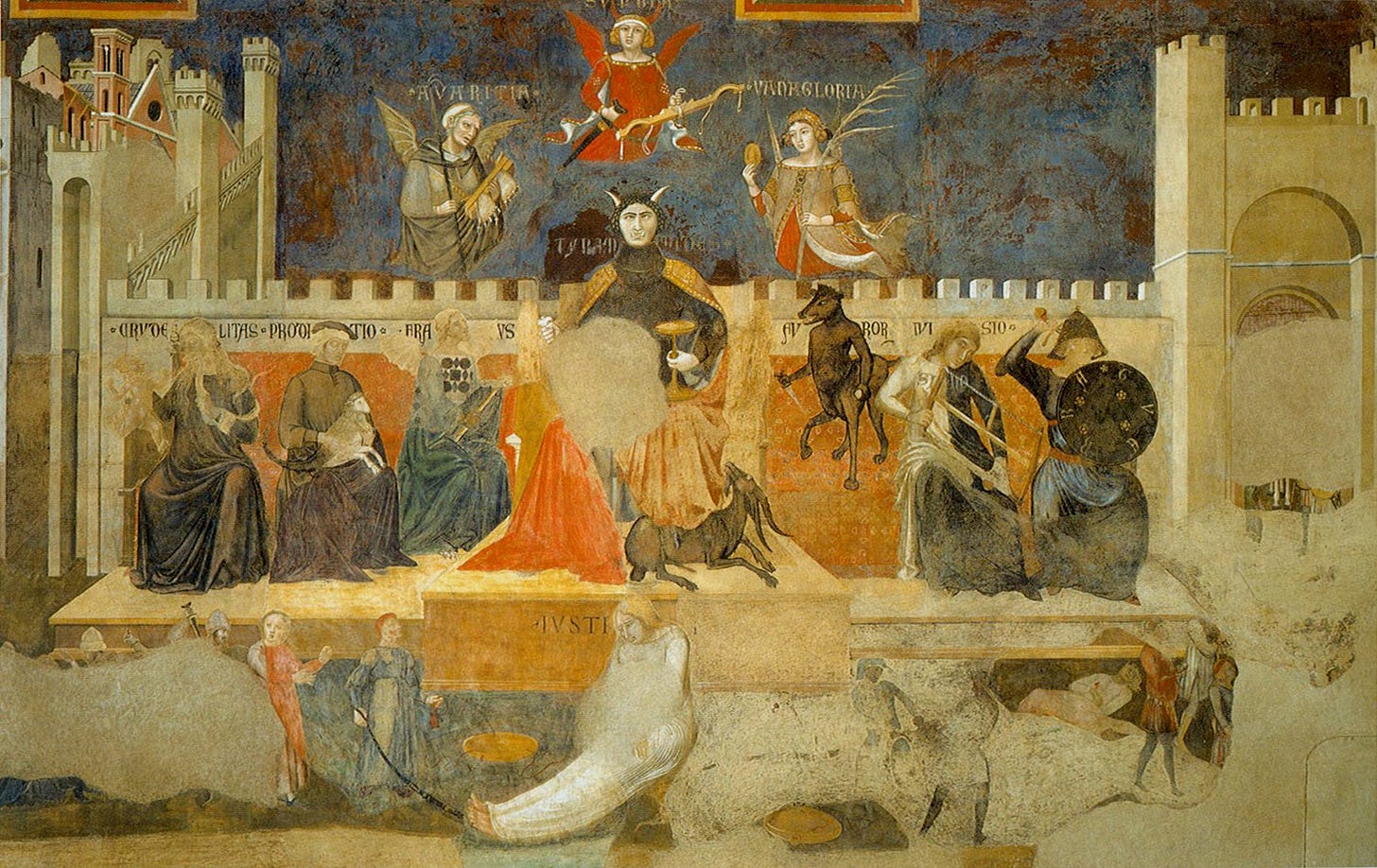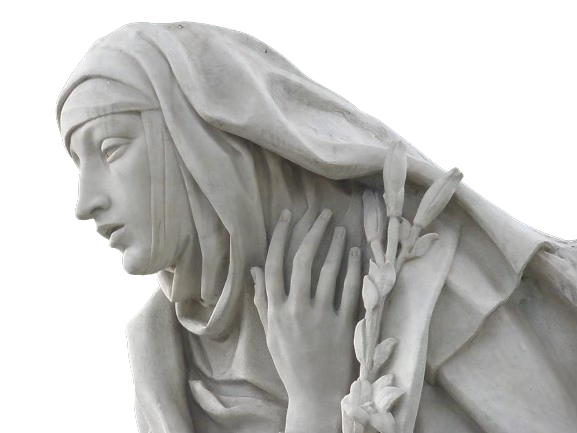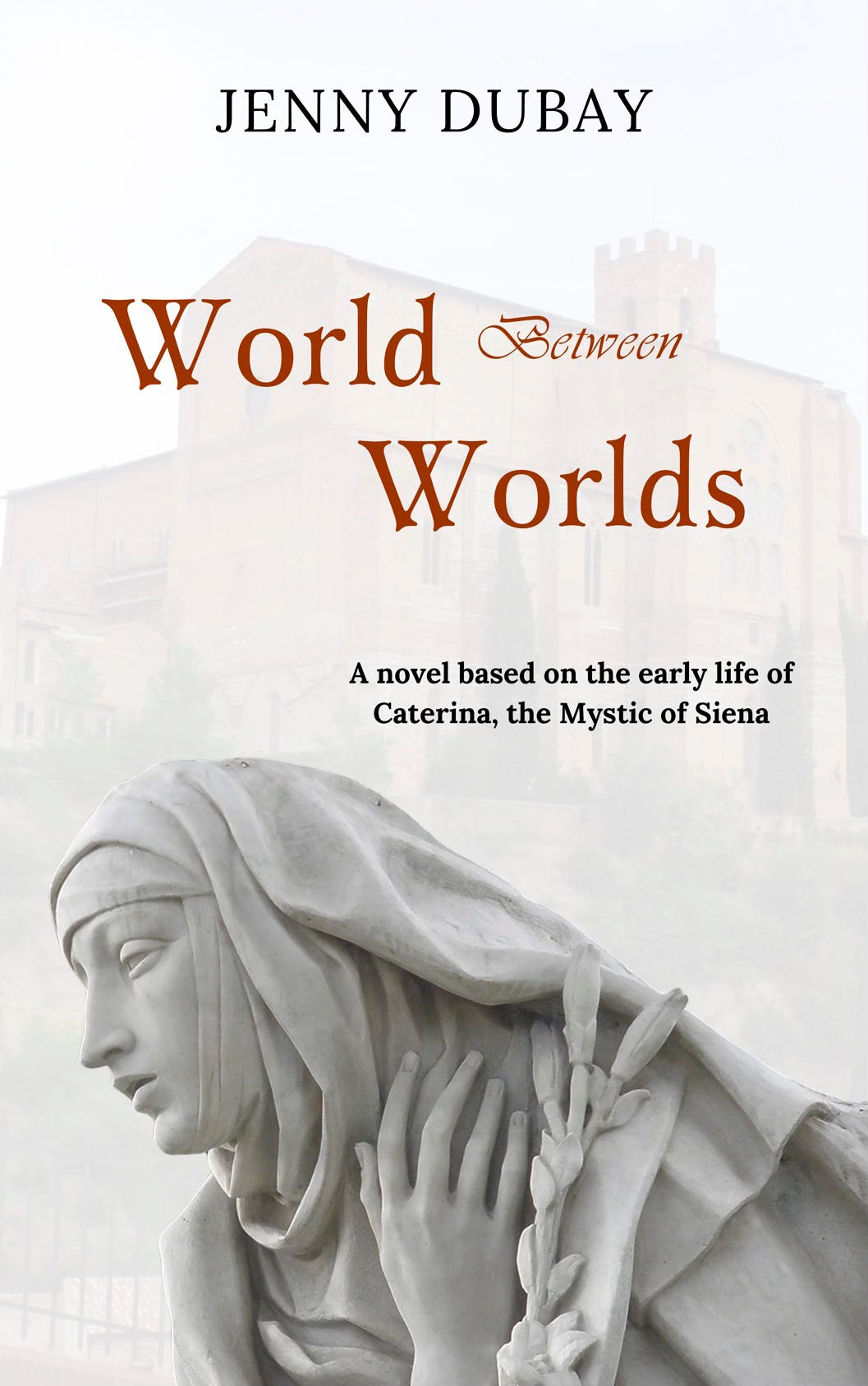If You Are What You Ought to Be
The history behind St. Catherine of Siena's most famous quote
“If you are what you ought to be, you will light a fire in all the world!"
This is one of St. Catherine of Siena’s most famous sayings, yet rarely is the source of the quote mentioned. We can read Caterina's Dialogue from cover to cover, scouring each page for a hint of her famous line, but we won't find the sentence anywhere. Where does it come from, and why is it so popular?
St. Catherine of Siena (Caterina in her native tongue) is best known for encouraging Pope Gregory XI to return to Rome, as well as for her unexpected role in medieval society and politics. Many people are familiar with her Dialogue, yet lesser known are her astounding letters.
Caterina was an avid writer, transcribing epistles to cardinals and popes (Gregory XI and Urban VI), nuns and friars, merchants and tradesmen, wives and even prostitutes. No one was immune to the beauty of her gift of eloquence. 382 of her letters survive, although we know by her references that she wrote many more. However, not many English-speaking people have read them all, in part because of limited availability.
Beginning in 2000, Dominican sister Suzanne Noffke undertook the immense task of translating and publishing all of Caterina’s letters, and in 2008 she completed her task; yet sadly her the volume set is out of print, and it's very difficult to find copies—as well as quite expensive.
This is unfortunate, because it's through her letters that we truly get a sense of Caterina's personality, fiery spirit and blunt love for humanity.
On December 9, 1379 Caterina wrote a letter to one of her closest disciples, Stefano di Corrado Maconi. Stefano was a young man who, like Caterina, was born in 1347. He was also a local Sienese, and was so devoted to “Mamma Caterina” that he was widely mocked as being Caterinato (“Caterinated”). He acted as her chief scribe when they were together—which they often were, since Stefano traveled to Florence, Avignon and Rome with Caterina and her other disciples. When they were apart, Stefano was the disciple she knew she could count on to perform even the most difficult tasks.
In this 1379 letter, Caterina was writing from Rome, where she’d been sent at the behest of Pope Urban VI to act as peacemaker and spiritual prophet for the papacy. Stefano remained in Siena because his mother was more than a bit attached to him, and was grumpy about all his recent travels. He would later go to Rome to be with his spiritual Mamma,but in the meantime he felt an obligation to be with his physical family.
Caterina was distraught because her beloved city of Siena wasn’t supportive of Pope Urban VI during the tumultuous opening years of the Great Schism. There was much debate over who the true pope was—the duly-elected Roman pontiff, Urban VI, or on the French anti-pope (as we now call him) Clement VII, who resided in Avignon.
Enclosed in the letter to Stefano was another, this one addressed to the governing officials of Siena. Caterina asked her friend to read this letter to the men who held power and authority in Siena. In a burst of encouragement, at the end of Stefano’s letter she wrote:
Speak to them at length about the information the letters contain, asking each one in the name of Christ crucified and in my name to do very conscientiously what they can with the Signori and anyone else whose responsibility it is, so that whatever ought to be done regarding holy Church and the vicar of Christ, Pope Urban VI, will be done. Tell them very seriously for me that they should please commit themselves in this matter for God’s honor and for the spiritual and temporal good of the city. See that you are not lukewarm but on fire in this affair and in prodding the brothers and your elders in the company to do whatever they can about what I write. If you are what you ought to be, you will light a fire not only there, but in all of Italy.
This must have taken immense courage on Stefano's part—and well did Caterina know that. Although charity and a burning desire to reform souls was at the heart of everything Caterina did, said and wrote, she never hesitated to tell the bold and blunt truth—even if that truth would be difficult to hear.

It goes without saying that governments tend to lean toward corruption. When people gain certain levels of authority they tend to crave ever-increasing levels of power if their souls aren’t rightly ordered. The governors of the Commune of Siena were no different. Having grasped some power, they lorded it over others in ways both selfish and unmerciful. Caterina wrote candidly to them in the letter she asked Stefano to read aloud in their presence:
Those who look out only for themselves live with little fear of God. They do not observe justice but in fact violate it and commit many injustices. They let themselves be tainted by human flattery—sometimes for money, and sometimes in order to please those who demand their service when it would be unjust to give it. Sometimes, to avoid punishing an offense, they free the perpetrator when they ought to bring down the rod of justice. They are acting wickedly in this and deserve the same punishment they should have inflicted on the one they have freed for the sake of money. To the poor, on the other hand, who haven’t been guilty of one-thousandth of that offense, they mercilessly met out harsh punishments. The wretches appointed to govern the city (but who can’t even govern themselves) often turn away to keep from seeing when poor women and men are being robbed … I’m not surprised that such people commit injustice, since they are obviously cruel even to themselves, living in such indecency that there is no difference at all between them and pigs wallowing in the mud!1
Our beloved saint certainly makes her feelings known with fortitude and undaunted determination. Caterina didn’t beat around the bush, because she realized our earthly time is limited. Time doesn’t wait for us, so we shouldn’t wait for time. When we sugar-coat the state of reality, we do an injustice to ourselves and to our God.
The letter then goes on to plea for justice and for the governors to “be faithful servants to holy Church, obedient to Pope Urban VI as true and faithful Christians, since he is truly pope, Christ’s vicar on earth.”2
We can only imagine how difficult it must have been for Stefano to utter such blunt words to the men in control of Siena, yet such a request wasn’t unique to this incident. From 1375 until 1378 the city of Florence was in open rebellion to the papacy, known as the War of the Eight Saints. Certain Florentine members of the Guelf party (those who backed the pope) urged Caterina to travel to Florence to act as peacemaker between the warring factions. Unable to personally travel to Florence at that time, she sent Stefano in her place.
Once there, Stefano delivered Caterina’s message, urging peace and papal reconciliation to the Florentine government—but to little success. A rumor spread around Florence that Stefano was determined to convince the government to subject themselves to Pope Gregory XI. This enraged the populace, who began to riot and “would without doubt have assailed him, had not the authority of most influential men intervened … events that were to render all immediate prospects of peace out of the question.”3
Given that he was attacked and nearly injured for delivering Caterina’s previous message, we can well imagine Stefano wasn’t eager for a repeat incident within his own city. Even so, trusting that the breath of God spoke through his beloved friend, Stefano successfully agreed to the task.
How does this return to “lighting a fire in all the world”? Although confronting the Sienese government must have been daunting, Stefano trusted in the Spirit-led mission of Caterina. When we follow the path our Lord sets out for us, when we follow His footsteps and run toward His holy will, we become who we ought to be, which brings joy to God and graces to the talents He has given us. We may never know what seeds we’re planting in all the world when we act according to His will, yet we can be reassured that those God-given seeds always blossom into ripe, rich fruits.
Special Offer!
If you’re intrigued by the life of St. Catherine of Siena and want to learn more, my adaptation of her early life (part one of a two book series) is currently on sale when you purchase directly from my website.
Learn more about World Between Worlds: A Novel Based on the Early Life of Caterina, the Mystic of Siena.
You can also purchase on Amazon using my affiliate link.
Suzanne Noffke, The Letters of Catherine of Siena, Vol IV (Tempe, AZ: Arizona Center for Medieval and Renaissance Studies, 2008), 321.
Ibid., 322.
Edmund Gardner, Saint Catherine of Siena: A Study in the Religion, Literature, and History of the Fourteenth Century in Italy (NY: E.P. Dutton & Co., 1907), 203.




